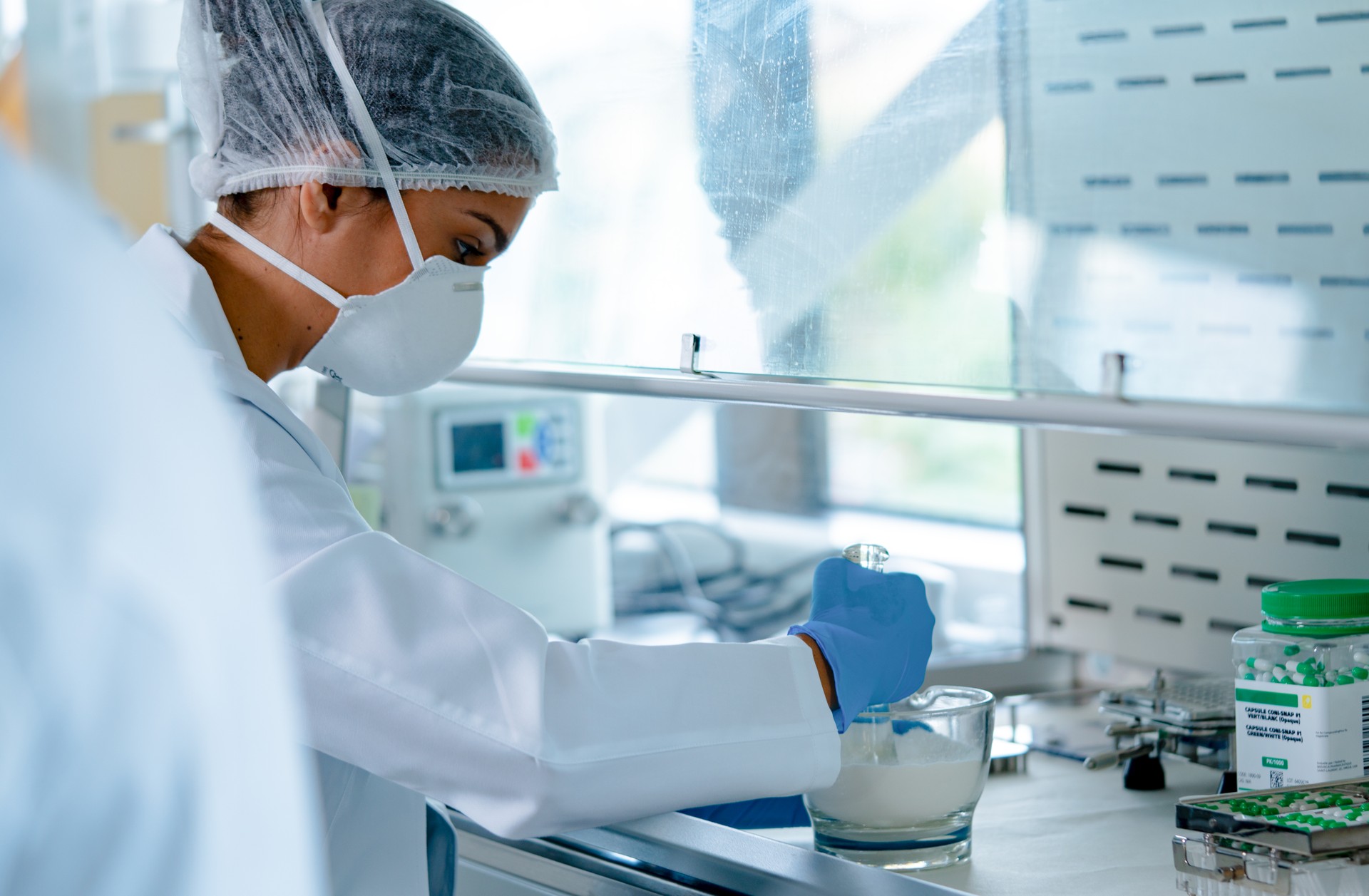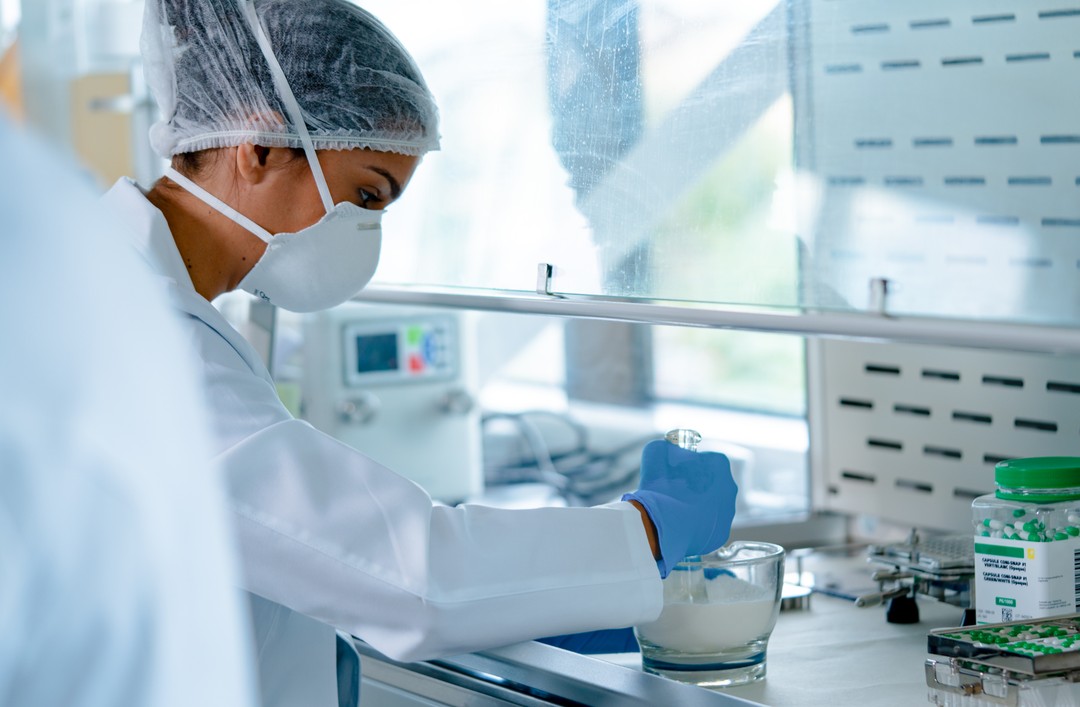| 8 minute read
Non-Sterile Compounding: A Guide to Primary Engineering Controls

Revised USP <795> and Primary Engineering Controls
In November 2022, the long-awaited update to the United States Pharmacopoeia (USP) General Chapter <795> on Non-Sterile Compounding was released. The revisions have many non-sterile compounding pharmacies across the United States buzzing with questions about what necessary changes must be implemented, sparking renewed interest in primary engineering controls (PECs).
PECs are devices employed directly at the point of use1 that serve to control airborne contamination from the working environment2. The USP <795> Chapter calls out specific requirements for PECs used in non-hazardous and hazardous compounding in order to ensure compounder safety and minimize environmental exposure. PECs can be broken down into three main categories2:
- Containment ventilated enclosure (CVE, i.e., powder hoods).
- Biological safety cabinet (BSC, i.e., laminar flow hoods).
- Compounding aseptic containment isolator (CACI).
During the compounding of hazardous drugs, PECs are designed to ensure containment of hazardous material, hence the name containment PECs (C-PECs)2. But the challenge remains: which PECs to use and how to be compliant with USP Chapters <795> and <800>?.The regulations surrounding PECs used in non-sterile compounding leave room for interpretation, shining light on the importance of implementing best practices. Being compliant is one thing. Applying best practice is another. It is the collective responsibility of all compounders to uphold the integrity of the compounding practice. As you adopt these standards and apply best practices, you'll not only stand out from the competition but, more importantly, position yourself as a preferred partner for physicians seeking collaboration and patients in need of your services. After all, physicians look for trusted partners who prioritize quality and patient safety. Patients, in turn, seek reliable pharmacies they can entrust with their health.
Non-Hazardous Compounding
Although the USP <795> does not lay forth specifics on hood selection for non-sterile non-hazardous compounding, it does require that compounding pharmacies perform an evaluation to determine what compounding activities result in powder generation. Where, such activities must be conducted in a hood. See excerpt from the new USP <795> chapter below3.
"Weighing, measuring, or otherwise manipulating components that could generate airborne chemical particles (e.g., active pharmaceutical ingredients [APIs], added substances, and conventionally manufactured products) must be evaluated to determine if these activities must be performed in a closed-system processing device to reduce the potential exposure to personnel or contamination of the facility or CNSPs. Examples of closed-system processing devices include containment ventilated enclosures (CVEs), biological safety cabinets (BSCs), and single-use containment glove bags. The process evaluation must be carried out in accordance with the facility’s SOPs, and the assessment must be documented.”
Interestingly, the USP stops short of clearly defining how to assess powder generation, making it vague. However, if you've ever weighed out stevia and tasted its sweet flavor in the air or seen wisps of ketoprofen dust floating around while compounding, you know for certain that powders can indeed become airborne. By these lines, although the chapter takes a roundabout way to outline when hoods are required, it is hard to imagine an instance where they should not be required. There is also value in consistency. If you document X instances where powder can become airborne (through an objective evaluation that is unclear and undefined…), why not simply perform all non-sterile non-hazardous weighing, measuring, and manipulative activities in that same closed-system space. It’s important that we do not underscore the importance of taking the precautions to protect the compounder, safeguard the integrity of the preparation, and reduce cross-contamination exposure. Compounding pharmacist and owner with over 25 years of experience, Mark Filosi, said it well:
“We used to think coal dust and saw dust was inconsequential. I don’t want to learn 20 years from now that I should have been using a hood. Also regardless of the hazard level, a hood does help prevent cross-contamination from one prep to the next. It cuts down on the residue of the previous preparation.”
So, what’s the take home message? Simple. A PEC should be required for all non-sterile compounding activities. Now, when evaluating which hood, be sure to always look for certifications from reputable organizations to ensure that your chosen equipment aligns with USP standards. For instance, the XPert Filtered Balance System Powder Containment Hood by Labconco is a CVE that checks off all of the boxes. It uses a built-in blower and HEPA filter to contain powders during weighing to help ensure the safety of the compounder.
Hazardous Compounding
For hazardous drug compounding, the necessity of a hood is clear. According to the USP General Chapter <800> on Hazardous Drug Compounding, all activities must be performed in a C-PEC offering both personnel and environmental protection, either through external ventilation or HEPA filtration3. However, when choosing the right hood for your specific compounding activities and compounding space, several factors should be taken into consideration:
- State Law Requirements: Before deciding on a hood, it's imperative to be aware of the specific requirements set forth by your state's laws. For instance, some states may stipulate the need for exterior hood ventilation, while others might leave it to the compounder's discretion. There might also be requirements for features like a waste chute.
- Anticipated Volume: Reflect on the volume your lab is currently compounded and anticipating to compound to help determine whether you'll need multiple C-PECs for your HD compounding room. Remember, if you're planning on having multiple C-PECs inside a containment secondary engineering control (C-SEC; i.e., the room in which the C-PEC is placed), you need to respect hood placement and air change per hour (ACPH) requirements. For instance, the USP <800> Chapter mandates that all C-PECs be placed in a negative pressure room with a minimum of 12 ACPH4.
- Type of Equipment: Keep in mind the equipment you plan to use within the hood, as it will directly affect the available workspace for compounders. It also influences the hood's height, especially if some equipment demands extra clearance.
- Presence of Fumes: If your compounding activities involve fumes, it is essential to invest in a hood designed with filters to handle them safely and effectively.
With these points in mind, Class I BSCs are designed for personnel and environmental protection by pulling air from the room through the front, away from the operator. They may be externally vented with a single HEPA filter or have two redundant HEPA filters that exhaust back into the room; although, USP indicates that the former is preferred3. The RXPert Single Filtered Balance System is an example of a high-quality C-PEC used for hazardous compounding. This Class I BSC is designed to meet the USP <800> standards and features a factory-installed canopy and HEPA filtration.
For occasional non-sterile hazardous compounding, a Class II BSC used for sterile compounding may be used but must be decontaminated, cleaned and disinfected before resuming sterile activities3. A Class II BSC is defined as a ventilated cabinet intended for personnel, product and environmental protection, designed with an open front and inward airflow (personnel protection), downward HEPA-filtered laminar airflow (product protection), and HEPA-filtered exhaust air (environmental protection).
The Medisca Advantage: Service, Selection and Peace of Mind
Let's face it, there is a lot to consider when selecting the right engineering controls for your compounding pharmacy. Yes, you need to be compliant with USP <795> and USP <800>, but you also need to make sure that the devices you choose fit the needs and future direction of your pharmacy. It all boils down to a few questions:
- Are you compounding, and do you plan to continue compounding- non-sterile preparations?
- What drugs are you handling (i.e., hazardous or non-hazardous)?
- What limitations exist in regard to costs (i.e., budget) and facility (i.e., compounding space, lease restrictions, building permits, accessibility, outside ventilation, etc.)?
With a team of experts specializing in hood selection for pharmaceutical compounding needs and a portfolio of 40 hoods for non-sterile compounding, Medisca is here to support compounders address these questions and find the best-fitted solutions for their specific pharmacy and/or facility needs. Medisca equipment specialists – led by a team of highly trained individuals with years of in-field experience – are here to walk you through all the steps of implementing a USP-compliant hood in your compounding pharmacy.
Ready to embrace best practices and elevate your PECs? Contact an account representative to connect you with an Equipment Specialist today.
Looking for more information on the revised USP General Chapters <795> and <800>? Visit here
References:
- Wagner, JT. Considerations for choosing primary engineering control for compounding sterile products. IJPC 2005; 9(4): 284-290.
- Chapter 12: Types of Engineering Controls. The Chapter <800> Answer Book.
- <795> Pharmaceutical Compounding – Nonsterile Preparations. United States Pharmacopoeia WebSite. Retrieved from: https://www.uspnf.com/sites/default/files/usp_pdf/EN/ USPNF/revisions/gc-795-postponement-rb-notice-20191122.pdf
- <800> Hazardous Drugs – Handling in Healthcare Settings. United States Pharmacopoeia WebSite. Retrieved from: https://www.usp.org/compounding/general-chapter-hazardous-drugs-handling-healthcare


